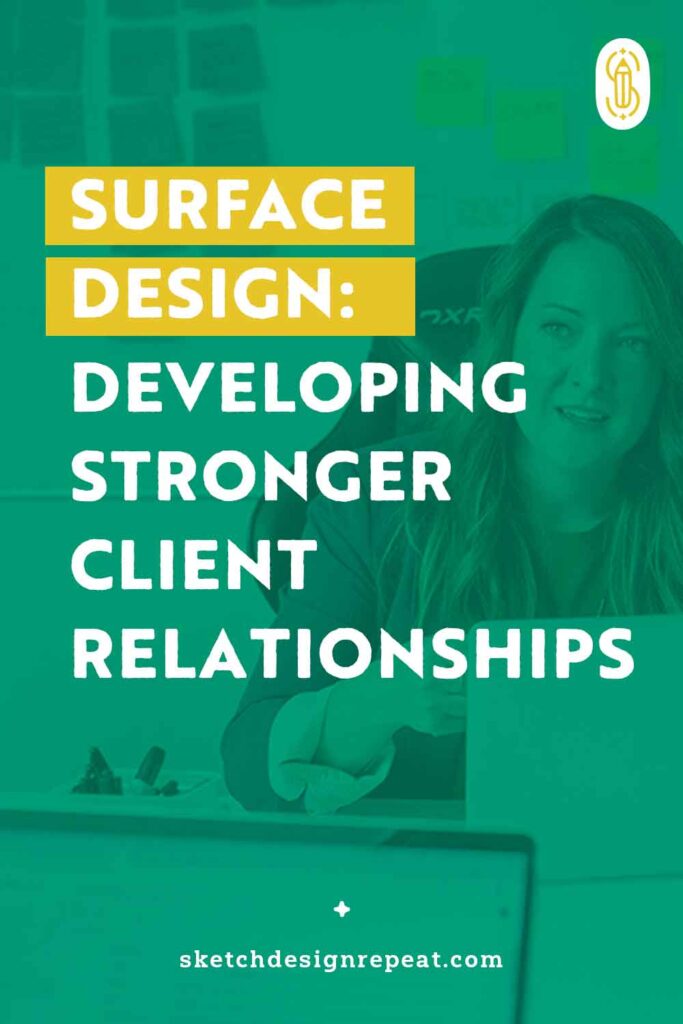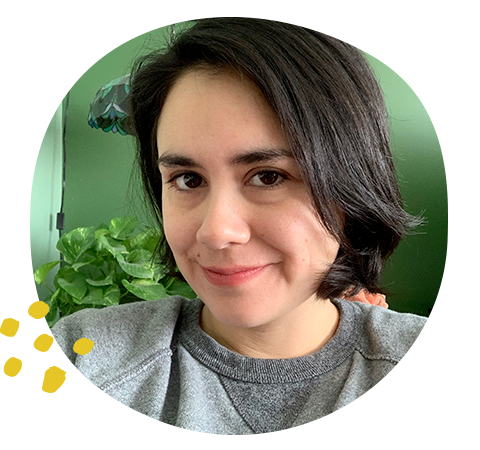Successfully navigating a career in surface pattern design extends beyond a designer’s talent or skill in creating captivating and aesthetically pleasing patterns, illustrations, and designs. A significant part lies in providing exceptional customer service.
This requires cultivating robust relationships with clients, whether they be prospective or established partners. Central to this endeavor is building trust, effective communication, and setting clear boundaries.
A designer’s ability to adeptly manage and balance these facets not only makes a large impact on the building of these flourishing relationships, but also holds the potential to shape the course and longevity of their career.

Building trust is important in client relationships because it can open doors to increased revenue for surface designers through more project opportunities, collaboration requests, and licensing or selling of portfolio work. When clients trust those they work with, they are perceived as more dependable, more likely to be listened to, and are given access to new or choice projects.
Trust plays a vital role in increasing loyalty, garnering positive testimonials on your work and abilities, and ultimately securing more work. Clients seek confidence in knowing that choosing to work with you means their needs will be met.
From my time as a former art buyer for a product-based company, I can attest that when faced with acquiring art for a new product or theme with limited slots, I consistently reached out to artists on my shortlist whom I trusted to deliver. This trust was built over time through positive experiences, highlighting the enduring impact of trust in fostering loyalty and continued collaboration.
Building Trust with Clients
It’s important to keep in mind that developing trust with clients takes time and involves being dependable, empathetic, and respectful. Imagine yourself in their shoes so that you can understand what your clients value. Here are some tips for building trust:
Integrate building trust into your marketing strategy.
Align your brand as one that values trust and customer satisfaction.
Demonstrate trustworthiness.
Showcase client reviews and testimonials on your website and social media platforms. Engage with followers, respond to comments, and demonstrate commitment to customer satisfaction to build a reliable reputation.
Establish strong relationships from the outset.
Starting with the first pitch email, show understanding and a genuine desire to help. Ask questions, express appreciation, and seek feedback to demonstrate your commitment to meeting client needs.
Underpromise and overdeliver.
Highlight your capabilities by avoiding overpromising on things you cannot deliver.
Prioritize clients’ best interests.
Create art with the target market’s needs in mind, offering solutions to their problems, and keep their feedback in mind as they are the ones who best understand their target market.
Be authentic and connect on a personal level.
Building genuine relationships can lead to long-lasting connections, even friendship. Share personal experiences and don’t hesitate to connect authentically. I developed one of my best friendships while managing art relationships!

Strategies for Fostering Open and Effective Communication
Effective communication serves as the foundation for building strong client relationships. It’s essentially the bridge that connects the designer’s expertise with the client’s expectations, creating a collaborative environment that enhances mutual understanding and forms the cornerstone of enduring and successful client relationships.
Poor communication, on the other hand, can result in a lack of trust, poor outcomes, and ultimately a breakdown in client relationships. Utilize these strategies to aid in your client communication:
Actively listen to anticipate and cater to your clients’ needs.
Clear and precise communication by summarizing key points ensures that both parties are on the same page regarding project expectations, timelines, and deliverables. This minimizes the likelihood of misunderstandings, reducing the potential for conflicts or dissatisfaction.
Tactfully address conflicts head-on.
Always assume that things were done with best intentions in mind and try not to jump to conclusions or place blame.
Keep questions clear, especially in email communication.
Once you have an established client, in my experience, most of the communication is via email. If so, consider breaking up your questions into parts with a clear direction. You can do this by listing questions out separately rather than in paragraph form, and by limiting the number of questions per email. I’ve found this helps to avoid overwhelming the recipient and you’re more likely to have all your questions answered.
Check in consistently.
Regularly check in when you are pitching to a company and maintaining existing client relationships. It will help keep you in the forefront of their mind when the next art acquisition need comes up.
Related Article: Email Pitching Tips from a Former Art Buyer
Timely follow-ups.
Promptly respond or confirm receipt of messages. Follow up on unanswered questions or expressions of interest in your art to demonstrate attentiveness and commitment.
Personalize your messaging.
One of my clients doesn’t have a personalized email address with their name, but all the responses are signed with one person’s name. I always make sure to address them with their name because it maintains that human connection.
Be mindful of your tone in email communication.
Try to avoid acronyms or emojis in your emails, especially when you’re pitching or onboarding a new client. Maintain good sentence structure, grammar, and diction. As an art buyer, I saw many email pitches and a surprising amount of them were poorly written. It’s not professional, so why would I take you seriously?
Tailor your communication to each client’s needs and expectations.
It’s fine to use templates to speed up your workflow, but each client is going to be different and your communication needs to be adjusted accordingly.

Setting Clear Boundaries for Successful Collaborations
Setting boundaries in client relationships is not just about constraints; it’s a strategic approach to fostering understanding and respect. Maintaining respect for a client means appreciating their boundaries and setting up your own as well.
Clearly defined boundaries provide clarity on project expectations, preventing scope creep — where the project’s objectives expand beyond the initial agreement — and minimizing misunderstandings. This contributes to a healthy work-life balance by communicating availability and response times.
Establishing these limits demonstrates professionalism, garnering respect from clients and helping avoid burnout. Well-defined boundaries enhance communication, build mutual respect, and lay the groundwork for long-term partnerships based on trust and reliability.
A significant step for surface pattern designers in laying the groundwork is getting clear on money and budget by establishing a price sheet for themselves that includes guidelines on the price points for selling, licensing, and freelancing (Shannon’s Artful Pricing course can help you if you need pricing guidance).
Setting boundaries contributes to smoother collaborations, increased client satisfaction, and the development of enduring professional connections.
In the surface pattern design industry, success transcends artistic talent, demanding a commitment to exceptional customer service. Relationships with clients, both prospective and established, hinge on trust, effective communication, and strategic boundaries. This not only impacts relationship building but also positions designers for enduring success.

Written by Cody Alice Moore
Website: www.codyalicemoore.com
Instagram: @codyalicemoore
Class: Client Feedback Strategies for Creatives
Cody is an artist, illustrator, and surface pattern designer with over 15 years of experience. Cody discovered surface design while working for four years as an art buyer for a national photo lab. Since 2019, she has been creating art full-time for her budding portfolio and growing collection of licensed designs.